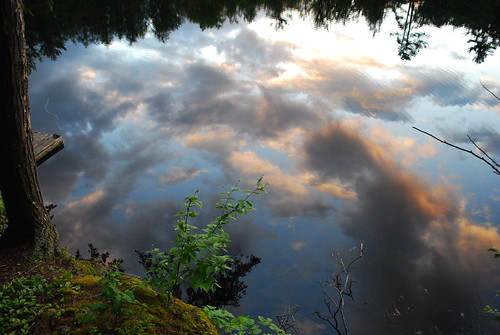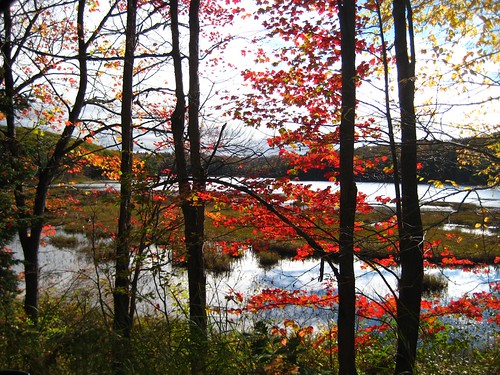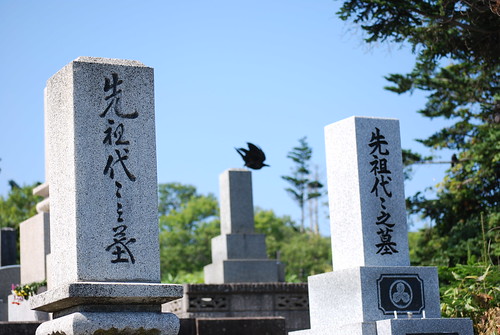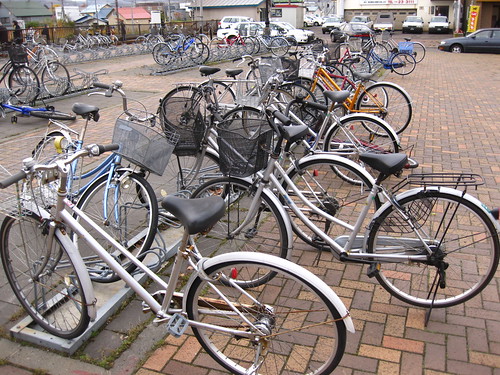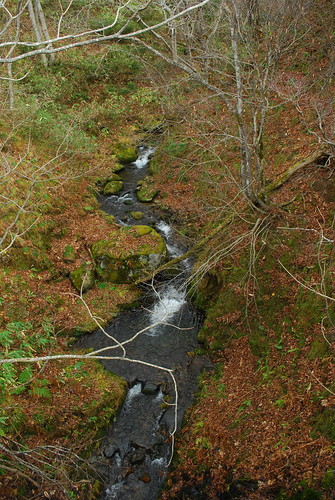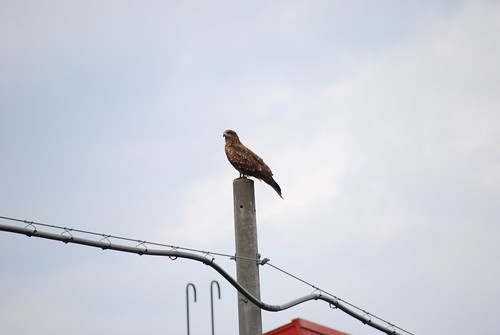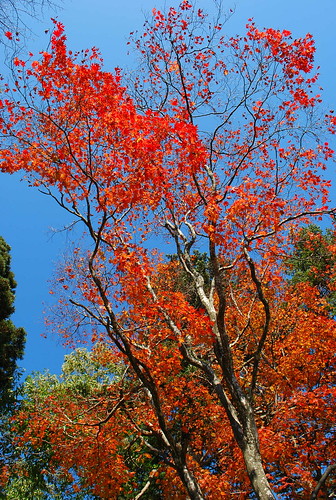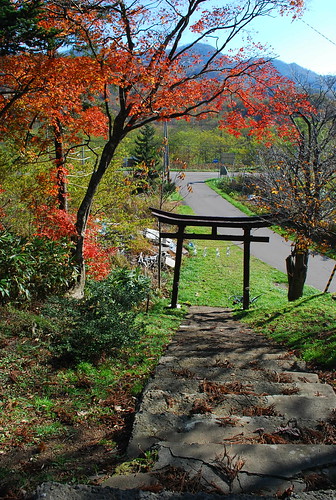(or, I suppose, Uniformity Part 2)
The exotic appeal of foreigners in Japan is at such a level as to be ridiculous by western standards. Over here my hair isn’t “blonde,” it’s “Golden.” I’ve had students ask me if I died my eyebrows to make them blonde. I’ve had a gaggle of school girls squeel “kakui!” at me when I took off my sunglasses and they saw my blue eyes. I’ve even had a woman marvel at my blonde arm hair and tell me that she wanted to shave my arm just so she could have the hair. All of these physical traits that are so quotidian in western society are aberrant here—are exotic here. At your first brushes with the reactions they elicit, you have to try hard to keep the reactions from swelling your head and making you feel like some kind of golden demi-god.
The reality is that these reactions are indicators of just how racially homogeneous—how uniform—Japanese society truly is. I’ve noticed this most when the on-the-street style reporters on Japanese news programs would ask average people for their opinions.
Every last one of the people interviewed was Japanese.
Back in Canada, you’d see a news spot like this, and the reporter would be getting opinions from all kinds of folks: from white folks, and black folks, and Middle Eastern folks, and asian folks. In Japan, all you’ve got is Japanese folks.
And that’s not just on the news. Wherever you go in this country, all you see is Japanese people. Racial diversity and multiculturalism are such alien ideas over here that when I try to talk about them, all I get in terms of a reaction are blank stares. Even when conversing with the few Japanese people I know who are, essentially, fluent in English, I get the furrowed-brow-head-tilt when I bring up the word “multiculturalism.”
It could be that I am keenly sensitive to this because I come from Toronto, and I am told that it is one of the most culturally diverse places on the north american continent (if not one of the most multicultural places on the planet). I was born and raised in Toronto, so maybe, to some degree, the normality of diversity was bred into me and I walk around with rainbow-coloured glasses on.
Regardless of whether I’m over sensitive when it comes to multiculturalism, it is a fact that Japanese society is pretty damn culturally homogenous. And it is from these seeds of cultural homogeneity that the apparent worship of the alien and the exotic grows. But It’s best not to let that veneration go to your head as the Japanese venerate the differences of the foreigner just as much as we north americans might venerate the differences of a lion when we have it behind plexiglass and steel mesh in a zoo. The exotic in Japan—that which deviates from the centuries-reinforced uniform—is a curiosity. It will always be held at arms length, no matter how interested the Japanese may seem in it. They will ask you all manner of questions to learn more about your exoticism, but the answers won’t endear you to them or provide some measure of understanding; they will only serve as further hallmarks of your oddness, and your answers will only satisfy a certain zoological interest in the asker.
Take, for example, the following interaction I had with some students:
“Pubic hair. Gold?”
“Sorry?”
Pointing to my head “Hair. Gold. Pubic hair: gold?”
Tracing a circle around his body with his index finger, making sure to include the nether regions, “Hair. All gold?”
And all I could do was shake my head. I thought about, jokingly, teaching them “do the drapes match the carpet?” but thought better of it, recalling how hideously wrong things went when my students tried to ask me about masturbation, and I tried to diffuse the situation by teaching them the English expression “what’s shaking?”
This was a specific instance, but it’s been repeated in slightly different iterations throughout my time here. Sure, these are kids, and they’re bound to be a little more gutter-minded and inquisitive than your average adult Japanese, but their questions are still evidence of the zoological impulse that seems to be suffused throughout Japanese society. It’s the thing that makes students squeal at blue eyes, and it’s the thing that makes women want to make dolls out of blonde hair.
It is the way the Japanese deal with departures from uniformity: the novelty intrigues them enough to investigate, but the difference creeps them out enough to keep the exotic at a distance.
And, least that seem like some kind of indictment of the Japanese as racists, I should make it clear that that is not my intent. What I took from all these brushes with the homogeneity—the uniformity of Japanese society is a glimpse of just how monocultural the society is. Part of our mandate here as JET/ALTs is to promote the cultures of our own countries in an attempt to “internationalize” the people in our towns.
As ALTs, we become the token, and—in a way—the proprietary foreigners for our towns/schools. The Boards of Education bring us over to teach their students English, but they also hope that we can teach the students a bit more about the world outside of Japan. And, witnessing the uniformity of Japanese society first hand, I can understand how very much in need of a little internationalization the people are. I hope that programs like JET are working on the whole and slowly wearing down the wariness that the Japanese seem to feel around foreigners/English-speakers. It’s clear that this society, founded on centuries of isolationism, has to want and accept the internationalization it seeks.
Without that broad acceptance and motivation to open its doors to the outside it won’t matter how many young foreigners you throw at Japan, it will remain a cultural island off the coast of the globalizing, multicultural Pangaea of the world.

